Caryn
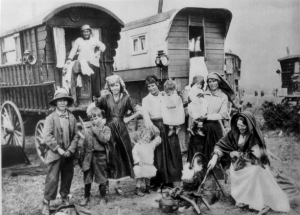 When we think of the horrors of the Holocaust, we think of millions of Jewish people who were murdered because they were Jewish. The horrible things Hitler did are so awful, that most of us can hardly bare to think about it at all. It is uncertain just when the Holocaust began, but the accepted date is January 30, 1933. That date is when Adolf Hitler was appointed German chancellor, setting in motion what would become the Nazi genocide against the Jews. On September 15, 1935, the Nuremberg Laws were enacted. The Nuremberg Laws were anti-Jewish statutes enacted by Germany, that were a major step in clarifying racial policy and removing Jewish influences from Aryan society. These laws, were the foundation on which the rest of Nazi racial policy hung.
When we think of the horrors of the Holocaust, we think of millions of Jewish people who were murdered because they were Jewish. The horrible things Hitler did are so awful, that most of us can hardly bare to think about it at all. It is uncertain just when the Holocaust began, but the accepted date is January 30, 1933. That date is when Adolf Hitler was appointed German chancellor, setting in motion what would become the Nazi genocide against the Jews. On September 15, 1935, the Nuremberg Laws were enacted. The Nuremberg Laws were anti-Jewish statutes enacted by Germany, that were a major step in clarifying racial policy and removing Jewish influences from Aryan society. These laws, were the foundation on which the rest of Nazi racial policy hung.
The Jewish people were not the only group of people who came to the attention of Hitler’s insane mind either. Under the rule of Adolf Hitler, a supplementary decree to the Nuremberg Laws was issued on November 26, 1935, defining Gypsies as “enemies of the race-based state”, the same category as Jews. The Nuremberg racial 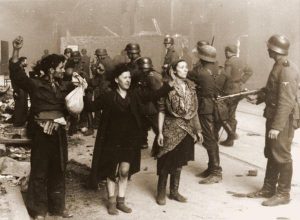 laws of September 15, 1935, “Law for the Protection of German Blood and Honor” and “Reich Citizenship Law” did not explicitly mention Gypsies, but in commentaries interpreting these laws, “Gypsies were included, along with Jews and Negros, as racially distinctive minorities with alien blood. As such, their marriage to Aryans was prohibited.” Like the Jews, the Gypsies were also deprived of their civil rights. Hitler viewed Jews and Gypsies as a defective race, in fact he viewed all non-white people as defective. I suppose this view was what originally justified Hitler’s brutal murder of 6 million Jews and who knows how many people of other races. On this day, November 15, 1943, Heinrich Himmler, who was the Reichsführer of the Schutzstaffel (Protection Squadron, or SS), and a leading member of the Nazi Party (NSDAP) of Nazi Germany ordered that Gypsies and those of mixed Gypsy blood are to be put on “the same level as Jews and placed in concentration camps.”
laws of September 15, 1935, “Law for the Protection of German Blood and Honor” and “Reich Citizenship Law” did not explicitly mention Gypsies, but in commentaries interpreting these laws, “Gypsies were included, along with Jews and Negros, as racially distinctive minorities with alien blood. As such, their marriage to Aryans was prohibited.” Like the Jews, the Gypsies were also deprived of their civil rights. Hitler viewed Jews and Gypsies as a defective race, in fact he viewed all non-white people as defective. I suppose this view was what originally justified Hitler’s brutal murder of 6 million Jews and who knows how many people of other races. On this day, November 15, 1943, Heinrich Himmler, who was the Reichsführer of the Schutzstaffel (Protection Squadron, or SS), and a leading member of the Nazi Party (NSDAP) of Nazi Germany ordered that Gypsies and those of mixed Gypsy blood are to be put on “the same level as Jews and placed in concentration camps.”
Hitler’s decision to include the Gypsies, and the ensuing murders of up to 500,000 Romani Gypsies, became known as the Romani Holocaust, or Porajmos, which means cutting, fragmentation, or destruction; or 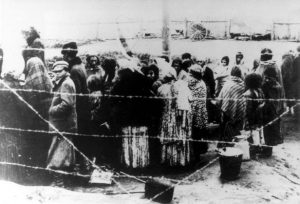 Samudaripen, which means mass killing. It was Nazi Germany and its allies planned and attempted effort to exterminate the Romani Gypsy people of Europe. Some historians put the death toll as high as 1.5 million. In 1982, West Germany formally recognized that genocide had been committed against the Romani. In 2011 the Polish Government passed a resolution for the official recognition of August 2nd as a day of commemoration of the genocide. As I was researching this horrific genocide, I began to wonder how it was that I had never heard about it before. Was I living under a rock? In reality, I doubt if it was in any of the history books of my time, because no one admitted that it happened until 1982, at the earliest.
Samudaripen, which means mass killing. It was Nazi Germany and its allies planned and attempted effort to exterminate the Romani Gypsy people of Europe. Some historians put the death toll as high as 1.5 million. In 1982, West Germany formally recognized that genocide had been committed against the Romani. In 2011 the Polish Government passed a resolution for the official recognition of August 2nd as a day of commemoration of the genocide. As I was researching this horrific genocide, I began to wonder how it was that I had never heard about it before. Was I living under a rock? In reality, I doubt if it was in any of the history books of my time, because no one admitted that it happened until 1982, at the earliest.
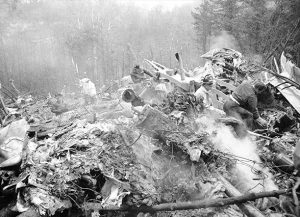
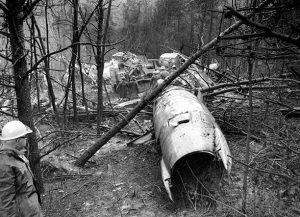 When a disaster strikes, we often see whole cities affected by the event. Rebuilding takes years, and the emotional scars might never heal. Plane crashes, while a disastrous event, seldom affect an entire town, not even if the plane crashed in the town. Those affect the people who saw the crash, rushed in to help the survivors, and cleaned up the aftermath…usually. That was not the case on November 14, 1970, when a charter plane carrying most of the Marshall University football team clipped a stand of trees and crashed into a hillside just two miles from the Tri-State Airport in Kenova, West Virginia. The team was returning from that day’s game, a 17-14 loss to East Carolina University. The investigators found that the plane was to the right of the correct approach corridor, and that is why they clipped the trees. Nevertheless, the plane crashed killing thirty seven Marshall football players, the team’s coach, its doctors, the university athletic director and 25 team boosters members, who were some of Huntington, West Virginia’s most prominent citizens, and had traveled to North Carolina to cheer on the Thundering Herd. One of the citizens of the town of Huntington later wrote that “the whole fabric, the whole heart of the town was aboard.”
When a disaster strikes, we often see whole cities affected by the event. Rebuilding takes years, and the emotional scars might never heal. Plane crashes, while a disastrous event, seldom affect an entire town, not even if the plane crashed in the town. Those affect the people who saw the crash, rushed in to help the survivors, and cleaned up the aftermath…usually. That was not the case on November 14, 1970, when a charter plane carrying most of the Marshall University football team clipped a stand of trees and crashed into a hillside just two miles from the Tri-State Airport in Kenova, West Virginia. The team was returning from that day’s game, a 17-14 loss to East Carolina University. The investigators found that the plane was to the right of the correct approach corridor, and that is why they clipped the trees. Nevertheless, the plane crashed killing thirty seven Marshall football players, the team’s coach, its doctors, the university athletic director and 25 team boosters members, who were some of Huntington, West Virginia’s most prominent citizens, and had traveled to North Carolina to cheer on the Thundering Herd. One of the citizens of the town of Huntington later wrote that “the whole fabric, the whole heart of the town was aboard.”
It had been a rough decade for the Thundering Herd. Their stadium had been condemned in 1962. It hadn’t been renovated since World War II. From the last game of the 1966 season, the team had not won a game. There had been some issues concerning recruiting violations as well, but the team seemed to be getting back on track. Dishonest coaches had been fired, the field had been rebuilt and they started winning games again. The loss to East Carolina was a real squeaker, and the team was looking forward to a better year the next season. Then disaster struck. For Huntington, the plane crash was “like the Kennedy assassination,” one citizen remembers. “Everybody knows where they were and what they were doing when they heard the news.” The town was in mourning. Shops closed, and windows were draped in black. The university held a memorial service and cancelled the Monday classes. The funerals seemed endless, taking place over the next few weeks. Everyone in town knew these people. Perhaps the saddest ceremony, was that of six players whose remains couldn’t be identified. They were buried together in Spring Hill Cemetery, on a hill overlooking their university.
Marshall got a new football coach…Jack Lengyel, from the College of Wooster in Ohio, who set about rebuilding the team. As a rule, Freshmen are not allowed to play on the Varsity squad, but Marshall was given special permission. Lengyel put together a mix of first year walk ons, and nine veteran players who had not been on the plane that night. It was a long road. The team lost the first game of the 1971 season, but in what seemed to be a miracle, they won their first home game against Ohio’s Xavier University 15-13, with a last second touchdown that seemed almost too good to be true. The team only won one other game that first season. During Lengyel’s four year tenure, they won nine other games, but none of those were as emotional as the first one. It was like they were playing for those who were lost, and maybe they were, or maybe it was because 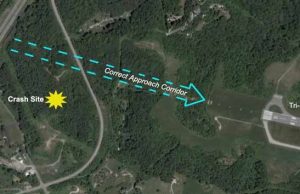
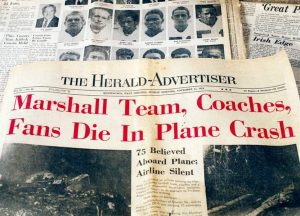 they were playing at home. No matter what happened in the remaining years of Lengyel’s tenure, the town would never forget how he brought the sport out of the ashes and brought hope back to the town. It wasn’t that football was all they had, or even that it could remotely compare to the loss the town had experienced, but I think it was more about honoring those lost, by not giving up. Those lost were not quitters, nor were those who remained.
they were playing at home. No matter what happened in the remaining years of Lengyel’s tenure, the town would never forget how he brought the sport out of the ashes and brought hope back to the town. It wasn’t that football was all they had, or even that it could remotely compare to the loss the town had experienced, but I think it was more about honoring those lost, by not giving up. Those lost were not quitters, nor were those who remained.
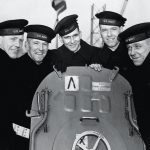 These days, it is rare to have siblings serving on the same post…much less the same ship. Nevertheless, it was a practice that did take place in the past. In fact, in the case of the USS Juneau, five brothers were all serving together on the ship. It was the height of World War II, and it was imperative that every available man was out there fighting. The Sullivan brothers, Francis Henry, George Thomas, Joseph Eugene, Madison Abel, and Albert Leo enlisted in the navy on January 3, 1942, with the stipulation that they all serve together on the same ship. The Navy had a policy of separating siblings, but this was not strictly enforced. Two brothers, George and Frank had served in the Navy before, but their brothers had not. All five were assigned to the light cruiser USS Juneau.
These days, it is rare to have siblings serving on the same post…much less the same ship. Nevertheless, it was a practice that did take place in the past. In fact, in the case of the USS Juneau, five brothers were all serving together on the ship. It was the height of World War II, and it was imperative that every available man was out there fighting. The Sullivan brothers, Francis Henry, George Thomas, Joseph Eugene, Madison Abel, and Albert Leo enlisted in the navy on January 3, 1942, with the stipulation that they all serve together on the same ship. The Navy had a policy of separating siblings, but this was not strictly enforced. Two brothers, George and Frank had served in the Navy before, but their brothers had not. All five were assigned to the light cruiser USS Juneau.
I stumbled upon the story of the five Sullivan brothers on the Find a Grave site while looking for disaster losses. Every time I have found numerous deaths in the same family, I have been surprised and shocked. Mostly, they have occurred because of some illness like typhoid fever, the plague, or some other illness, and those are all really sad, especially when it is a disease we can cure now. This was different, however. The Sullivan brothers were 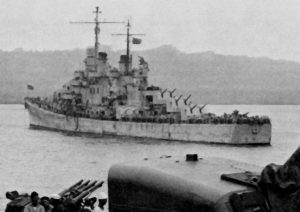 not sick…there was no epidemic, this was war. This simply a demonstration of why brothers were not normally on the same ship.
not sick…there was no epidemic, this was war. This simply a demonstration of why brothers were not normally on the same ship.
The Juneau engaged in a number of battles during the months of the Guadalcanal Campaign which began in August 1942. Early in the morning of November 13, 1942, during the Naval Battle of Guadalcanal. The Juneau was struck by a Japanese torpedo and forced to withdraw. Later that day, it was leaving the Solomon Islands’ area for the Allied rear area base at Espiritu Santo with other surviving United States warships, when the Juneau was struck again, this time by a torpedo from Japanese submarine I-26. The torpedo most likely hit the thinly armored light cruiser at or near the ammunition magazines and the ship exploded and quickly sank. The Helena and San Francisco, who were also in the area, but they had assumed that there were no survivors, and quickly departed without attempting to rescue any of the survivors.
More than 100 sailors survived the sinking of Juneau, but they were left to fend for themselves in the open ocean for eight days before rescue aircraft finally arrived. While awaiting rescue, all but 10 died from the elements and shark attacks, including the five Sullivan brothers. Two of the brothers apparently 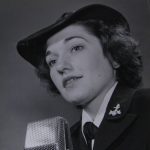 survived the sinking, only to die in the water. Two others presumably went down with the ship. Some reports indicate the fifth brother also survived the sinking, but disappeared during the first day in the water. On 20 November 1942, USS Ballard recovered two of the ten survivors. They were found in separate rafts, five miles apart. One of the survivors recovered by Ballard stated he had been with one of the Sullivan brothers for several days after the sinking. In that one day, Thomas and Alleta Abel Sullivan, lost all five of their sons. They were left only with their daughter, Genevieve Marie Sullivan Davidson. Their other daughter, Kathleen Sullivan had died at birth. Amazingly, daughter Genevieve decided to serve in the Navy too, as a Wave. While she survived her service, I’m sure her parents, while proud of her, were tormented by her decision.
survived the sinking, only to die in the water. Two others presumably went down with the ship. Some reports indicate the fifth brother also survived the sinking, but disappeared during the first day in the water. On 20 November 1942, USS Ballard recovered two of the ten survivors. They were found in separate rafts, five miles apart. One of the survivors recovered by Ballard stated he had been with one of the Sullivan brothers for several days after the sinking. In that one day, Thomas and Alleta Abel Sullivan, lost all five of their sons. They were left only with their daughter, Genevieve Marie Sullivan Davidson. Their other daughter, Kathleen Sullivan had died at birth. Amazingly, daughter Genevieve decided to serve in the Navy too, as a Wave. While she survived her service, I’m sure her parents, while proud of her, were tormented by her decision.
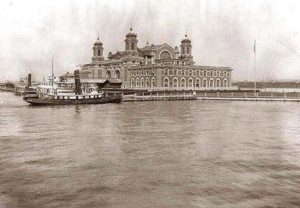 A number of my ancestors came to America during and prior to the years that Ellis Island was the processing center in New York. I have no doubt that some of them came through Ellis Island, but I have not confirmed that. I find many of the names in my tree, but while many of the ancestors I have found came over by way of New York, it would appear that my direct line arrived in America before the immigration center at Ellis Island opened on January 2, 1892. Before that time, immigrants were handled by the individual states where the immigrant first arrived. It is estimated that about 40% of Americans can trace their roots through Ellis Island, so while I see many familiar names, they may or may not be my direct line, and in fact, they might not be related at all.
A number of my ancestors came to America during and prior to the years that Ellis Island was the processing center in New York. I have no doubt that some of them came through Ellis Island, but I have not confirmed that. I find many of the names in my tree, but while many of the ancestors I have found came over by way of New York, it would appear that my direct line arrived in America before the immigration center at Ellis Island opened on January 2, 1892. Before that time, immigrants were handled by the individual states where the immigrant first arrived. It is estimated that about 40% of Americans can trace their roots through Ellis Island, so while I see many familiar names, they may or may not be my direct line, and in fact, they might not be related at all.
Ellis Island is located in New York Harbor off the New Jersey coast and was named for merchant Samuel Ellis, who owned the land in the 1770s. The island was given the nickname, The Gateway to America because more than 12 million immigrants passed through the center since it opened in 1892. On January 2, 1892, 15 year old Annie Moore, from Ireland, became the first person to pass through the newly opened Ellis Island, which President Benjamin Harrison designated as America’s first federal immigration center in 1890. Oddly, not all 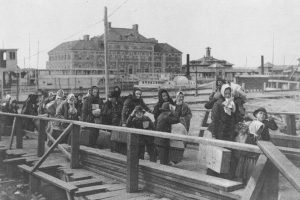 immigrants who sailed into New York had to go through Ellis Island. First and second class passengers were just given a brief shipboard inspection and then disembarked at the piers in New York or New Jersey, where they passed through customs. People in third class, though, were transported to Ellis Island, where they underwent medical and legal inspections to ensure they didn’t have a contagious disease or some condition that would make them a burden to the government. Nevertheless, only two percent of all immigrants were denied entrance into the United States. The peak years of immigration through Ellis Island were from 1892 to 1924. The 3.3 acre island was enlarged by landfill, and by the 1930s, it had reached its current size of 27.5 acres. After the extra size was completed, new buildings were constructed to handle the massive influx of people coming to America for a better life. During it’s busiest year, which was 1907, over 1 million people were processed through Ellis Island.
immigrants who sailed into New York had to go through Ellis Island. First and second class passengers were just given a brief shipboard inspection and then disembarked at the piers in New York or New Jersey, where they passed through customs. People in third class, though, were transported to Ellis Island, where they underwent medical and legal inspections to ensure they didn’t have a contagious disease or some condition that would make them a burden to the government. Nevertheless, only two percent of all immigrants were denied entrance into the United States. The peak years of immigration through Ellis Island were from 1892 to 1924. The 3.3 acre island was enlarged by landfill, and by the 1930s, it had reached its current size of 27.5 acres. After the extra size was completed, new buildings were constructed to handle the massive influx of people coming to America for a better life. During it’s busiest year, which was 1907, over 1 million people were processed through Ellis Island.
When the United States entered into World War I, immigration to the United States decline, most likely because travel anywhere was risky. Ellis Island was used as a detention center for suspected enemies during that time. Following the war, Congress passed quota laws and the Immigration Act of 1924, which sharply reduced the number of newcomers allowed into the country and also enabled immigrants to be processed at United States 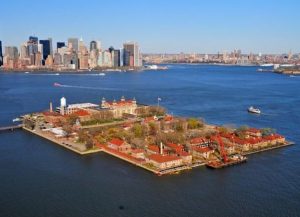 consulates abroad. The act also enabled immigrants to be processed at United States consulates abroad, making detention at Ellis Island obsolete. After 1924, Ellis Island switched from a processing center to other purposes, such as a detention and deportation center for illegal immigrants, a hospital for wounded soldiers during World War II and a Coast Guard training center. In November 1954, the last detainee, a Norwegian merchant seaman, was released and Ellis Island officially closed on November 12, 1954. In 1984, Ellis Island underwent a $160 million renovation, the largest historic restoration project in United States history. In September 1990, the Ellis Island Immigration Museum opened to the public and is visited by almost 2 million people each year.
consulates abroad. The act also enabled immigrants to be processed at United States consulates abroad, making detention at Ellis Island obsolete. After 1924, Ellis Island switched from a processing center to other purposes, such as a detention and deportation center for illegal immigrants, a hospital for wounded soldiers during World War II and a Coast Guard training center. In November 1954, the last detainee, a Norwegian merchant seaman, was released and Ellis Island officially closed on November 12, 1954. In 1984, Ellis Island underwent a $160 million renovation, the largest historic restoration project in United States history. In September 1990, the Ellis Island Immigration Museum opened to the public and is visited by almost 2 million people each year.
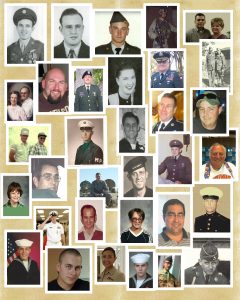 In times of war, and even in times of peace, there is a group of people who stand always at the ready…prepared to go at a moments notice, into battle to defend this country and the freedoms we enjoy. They are not always treated in the way they should be treated. It’s incomprehensible to me that we can ask these men and women to protect us in times of trouble, and then protest them when we don’t like the war they have been asked to fight. Today is Veterans Day. It is a day in which to honor all who served, in all wars, whether they were killed in action, died later, are retired or discharged from service, or are currently serving. So many veterans have served this country over the years. Without our soldiers, we would not be a free nation. In fact, were it not for our soldiers, we would probably still belong to England, or worse.
In times of war, and even in times of peace, there is a group of people who stand always at the ready…prepared to go at a moments notice, into battle to defend this country and the freedoms we enjoy. They are not always treated in the way they should be treated. It’s incomprehensible to me that we can ask these men and women to protect us in times of trouble, and then protest them when we don’t like the war they have been asked to fight. Today is Veterans Day. It is a day in which to honor all who served, in all wars, whether they were killed in action, died later, are retired or discharged from service, or are currently serving. So many veterans have served this country over the years. Without our soldiers, we would not be a free nation. In fact, were it not for our soldiers, we would probably still belong to England, or worse.
Our soldiers sacrifice everyday. In a post my nephew, Steve Spethman posted today, was a good explanation of just what a veteran really is, and I liked it. The saying went like this, “What is a veteran? A ‘Veteran’ – whether active duty, discharged, retired, or reserved – is someone who, at one point in his life, wrote a blank check made payable to ‘The United States of America,’ for an amount of ‘up to, and including his life.’ That is honor. And there are way too many people in this country today, who no longer understand that fact.” That really says it all. We think about our soldiers going into war, and fighting the 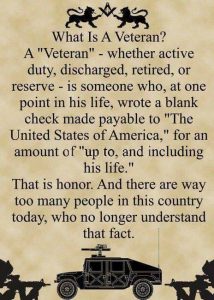 enemy. We even think about them losing their lives. We think about their loved ones back home worrying and praying for their safe return every day. We think about the irony and sometimes stupidity of war, and wonder why we can’t all just get along. People protest the wars, screaming at the soldiers because they did their duty and fought the war as they were ordered to do.
enemy. We even think about them losing their lives. We think about their loved ones back home worrying and praying for their safe return every day. We think about the irony and sometimes stupidity of war, and wonder why we can’t all just get along. People protest the wars, screaming at the soldiers because they did their duty and fought the war as they were ordered to do.
We think about and do so many things concerning war, but just how often to we really thing about the honor and integrity of the men and women who actually go into war, or even stand at the ready, just in case we need them. They know that every time they deploy with their unit, that it could easily end up being the last time they see their family, friends, or their country. They put their lives on hold, missing out on their children’s sporting events, school plays, holidays, birthdays, and even their birth, all to go out and put their lives on the line for people they don’t even know. Now, that’s honor!! Happy Veterans Day to all our veterans, and thank you all for your service. This nation and all it’s people owe you a debt of gratitude that we can never repay. We honor you today. God bless you all.
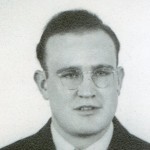
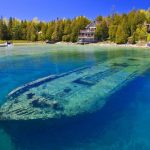 In September of 1975, my husband, Bob Schulenberg and I made a trip to Superior, Wisconsin to visit my Uncle Bill Spencer and his family. Uncle Bill and I had always been close, and it was a trip I thoroughly enjoyed. Part of the trip included driving around the shores of Lake Superior, while Uncle Bill gave us some history of the area, including the many shipwrecks that had occurred in the lake. Lake Superior is the largest fresh water lake in the world, and in reality it is more a sea than a lake. The lake experiences treacherous storms, especially in November when the Winter gales sweep over the it. With a huge shipping industry operating on the lake every year, accidents are bound to happen periodically, especially if a ship is caught out on the lake too late in the season. Listening to Uncle Bill tell us about the ghosts of Lake Superior, as the wrecks were called, and how you could see them beneath the water if you flew over the lake, peeked my curiosity about when and where the ships had lost their battles with the lake.
In September of 1975, my husband, Bob Schulenberg and I made a trip to Superior, Wisconsin to visit my Uncle Bill Spencer and his family. Uncle Bill and I had always been close, and it was a trip I thoroughly enjoyed. Part of the trip included driving around the shores of Lake Superior, while Uncle Bill gave us some history of the area, including the many shipwrecks that had occurred in the lake. Lake Superior is the largest fresh water lake in the world, and in reality it is more a sea than a lake. The lake experiences treacherous storms, especially in November when the Winter gales sweep over the it. With a huge shipping industry operating on the lake every year, accidents are bound to happen periodically, especially if a ship is caught out on the lake too late in the season. Listening to Uncle Bill tell us about the ghosts of Lake Superior, as the wrecks were called, and how you could see them beneath the water if you flew over the lake, peeked my curiosity about when and where the ships had lost their battles with the lake.
Just a month later, on November 10, 1975, while driving around the lake on his way back from a gun show, Uncle Bill experienced the gales of November from the lake shore, not knowing at the time that the SS Edmond Fitzgerald was fighting for its life, in a losing battle on the lake. The ship had made a run for it from Superior, Wisconsin, but found itself in serious trouble the next day. This was not going to be a battle the ship or her  crew would survive. The SS Edmund Fitzgerald had once been the largest and fastest ship on the Great Lakes, at 729 feet in length. First launched in 1958, its service would be cut short that fateful day in 1975.
crew would survive. The SS Edmund Fitzgerald had once been the largest and fastest ship on the Great Lakes, at 729 feet in length. First launched in 1958, its service would be cut short that fateful day in 1975.
The ship left Burlington Northern Railroad Dock, Number 1 at Superior, Wisconsin on November 9th, carrying 26,116 tons of iron ore pellets. The next day it was hit with a storm packing 60 mile per hour winds and waves in excess of 15 feet. Captain Ernest McSorley steered north, trying to make it to safety in Whitefish Bay, but then the radar failed and the storm took out the power at Whitefish Bay taking with it Whitefish Point’s radio beacon. McSorley was traveling blind. The huge wave swept over the ship, and it began taking on water. A ship taking on water is never a good thing, but when you add to that 26,116 tons of iron ore pellets, that ship is in trouble. Another ship, the Anderson stayed in radio contact with the Fitzgerald, trying to help it reach the bay, but to no avail. Just after 7pm on November 10th, 17 miles from Whitefish Bay, the Fitzgerald made its last radio transmission. The ship, sunk lower and lower from the added weight of the water until its bow pitched down into the lake and the vessel was unable to recover. The ship broke in two, either from waves and water or on its way to the bottom, taking with it cargo and crew. None of the 29 men aboard survived.
It’s not hard to imagine why the shipwrecks are called the Ghosts of Lake Superior, because many, if not all of 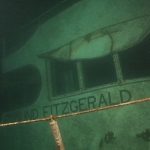
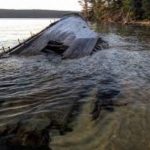 them took with them the men and women who had been their crew. Most of those lost souls are still there in a watery grave, because it is too difficult to recover the bodies. The Edmund Fitzgerald now lies under 530 feet of water, broken in two sections. It is just one of at least 52 ships that litter the bottom of the lake. On July 4, 1995, the ship’s bell was recovered from the wreck, and a replica, engraved with the names of the crew members who perished in this tragedy, was left in its place. The original bell is on display at the Great Lakes Shipwreck Museum at Whitefish Point in Michigan.
them took with them the men and women who had been their crew. Most of those lost souls are still there in a watery grave, because it is too difficult to recover the bodies. The Edmund Fitzgerald now lies under 530 feet of water, broken in two sections. It is just one of at least 52 ships that litter the bottom of the lake. On July 4, 1995, the ship’s bell was recovered from the wreck, and a replica, engraved with the names of the crew members who perished in this tragedy, was left in its place. The original bell is on display at the Great Lakes Shipwreck Museum at Whitefish Point in Michigan.
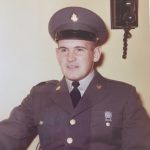
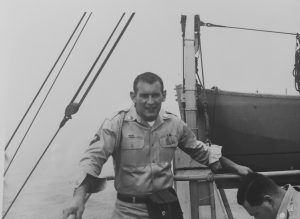 When most people think of Hawaii, they think of a tropical paradise, but for my husband, Bob’s uncle, Butch Schulenberg nothing could be further from the truth…at least not during his days in the service. When we think of Hawaii, snow does not come to mind, but in reality, “It snows here every year, but only at the very summits of our 3 tallest volcanoes (Mauna Loa, Mauna Kea and Haleakala),” says Ken Rubin, geology and geophysics professor at the University of Hawaii. “The snow level almost never gets below 9,000 feet in Hawaii during the winter, but since these mountains are taller than 13,000 feet, 13,000 feet, and 10,000 feet, respectively, they get dusted with snow a few times a year. It rarely stays on the ground for more than a few days though.”
When most people think of Hawaii, they think of a tropical paradise, but for my husband, Bob’s uncle, Butch Schulenberg nothing could be further from the truth…at least not during his days in the service. When we think of Hawaii, snow does not come to mind, but in reality, “It snows here every year, but only at the very summits of our 3 tallest volcanoes (Mauna Loa, Mauna Kea and Haleakala),” says Ken Rubin, geology and geophysics professor at the University of Hawaii. “The snow level almost never gets below 9,000 feet in Hawaii during the winter, but since these mountains are taller than 13,000 feet, 13,000 feet, and 10,000 feet, respectively, they get dusted with snow a few times a year. It rarely stays on the ground for more than a few days though.”
I had no idea, as I’m sure many of you could also say. I don’t know if Butch knew what he was getting into when he and the officer he was driving for, went to one of those areas where there was not only snow, but it was cold…really cold. In fact, the only way that Butch could even begin to stay warm was to bundle up in his sleeping bag. He probably would have tied it all the way over his head, if he could breathe that way. It was a complete shock to his system, as it would have been to mine. Being stationed in Hawaii would be the dream assignment, and here Butch was…in the snow. In fact, I can just hear him telling his parents, “It’s freezing here!!” The thought is almost laughable, or would have been if it weren’t so cold.
Butch told my husband, Bob and me several stories about his driving days in the service, when we were there for a visit about a month ago. It was interesting to listen to the details that a driver would have known about 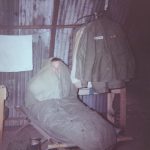
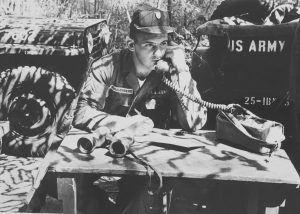 the situations that the company would have been in…and probably a lot of responsibility too. Much of the details of the movements of the company and the battles they engaged in, were classified, and to say anything at the time could have put people in danger or get them killed. A good driver would have known when to talk and when to keep quiet. Butch was a good driver, and well respected. I am proud of his service. Thank you Butch. Today is Butch’s birthday. Happy birthday Butch!! Have a great day!! We love you!!
the situations that the company would have been in…and probably a lot of responsibility too. Much of the details of the movements of the company and the battles they engaged in, were classified, and to say anything at the time could have put people in danger or get them killed. A good driver would have known when to talk and when to keep quiet. Butch was a good driver, and well respected. I am proud of his service. Thank you Butch. Today is Butch’s birthday. Happy birthday Butch!! Have a great day!! We love you!!
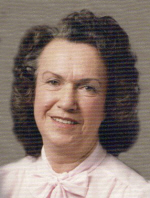
 Every time I think of my Aunt Ruth Wolfe, which is often, because I remind myself of her so much, I can easily see how much alike we are, and yet how very different. We were both passionate about a sport. For her it was horseback riding and racing. For me it was gymnastics. Aunt Ruth could handle horses as if they were an extension of herself. I never watched her ride or race, that I can recall, but I have seen pictures of her with her horses. It was so clear to me that she loved each and every one of them, and they loved her too. Her ability to ride was amazing. My Uncle Bill Spencer, her brother, told of the races she had won, and you could tell that he was so proud of his little sister, and her wonderful ability. I know he was, because of the number of pictures of her with her horses that graced the family history that Uncle Bill so lovingly put together.
Every time I think of my Aunt Ruth Wolfe, which is often, because I remind myself of her so much, I can easily see how much alike we are, and yet how very different. We were both passionate about a sport. For her it was horseback riding and racing. For me it was gymnastics. Aunt Ruth could handle horses as if they were an extension of herself. I never watched her ride or race, that I can recall, but I have seen pictures of her with her horses. It was so clear to me that she loved each and every one of them, and they loved her too. Her ability to ride was amazing. My Uncle Bill Spencer, her brother, told of the races she had won, and you could tell that he was so proud of his little sister, and her wonderful ability. I know he was, because of the number of pictures of her with her horses that graced the family history that Uncle Bill so lovingly put together.
Aunt Ruth could pick up any musical instrument and play like an expert, which is one of the areas she and I differ, because I can’t play any musical instrument. From what my cousin, Shirley Cameron has told me, her mom was able to play any instrument instinctively…and she played them beautifully. In my defense, I am more of a techy or geek, whichever you prefer. When it comes to computers, I can instinctively maneuver just about any area I need to. I don’t know if Aunt Ruth ever had a chance to use a computer, but my guess is that she didn’t. However, I have a feeling that she might have been quite capable too, at least she would have been if I’m right about how much we were alike.
The other ways that Aunt Ruth reminds me of me, is that we look a lot alike, and we laugh a lot alike. I have pictures 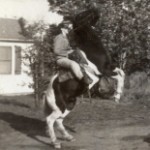
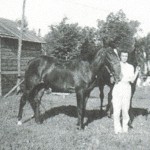 that really remind me of my aunt, and every time I laugh, it is like going back in time. I am reminded of all the times that my family did things with Aunt Ruth’s family. Everything from trips together, to picnics, to times at their home or at ours. We always loved to have them come. It was so exciting to see them, and since they often surprised us, in the later years, it was like having a surprise birthday party. I really miss that. Today would have been Aunt Ruth’s 91st birthday. Happy birthday in Heaven Aunt Ruth. We love and miss you very much, and we will see you again very soon.
that really remind me of my aunt, and every time I laugh, it is like going back in time. I am reminded of all the times that my family did things with Aunt Ruth’s family. Everything from trips together, to picnics, to times at their home or at ours. We always loved to have them come. It was so exciting to see them, and since they often surprised us, in the later years, it was like having a surprise birthday party. I really miss that. Today would have been Aunt Ruth’s 91st birthday. Happy birthday in Heaven Aunt Ruth. We love and miss you very much, and we will see you again very soon.
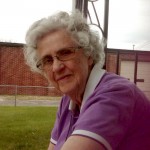 It seems impossible to me that my Aunt Evelyn Hushman has been gone now almost two years. She went to Heaven just a little over two months after my mother, her sister, Collene Spencer went to Heaven. I guess that isn’t really surprising to me, even if it might have been to some people. With Aunt Evelyn’s cancer diagnosis, and the fact that it was well advanced before it was diagnosed, her passing was something that was coming…like it or not. Well, my mom didn’t like that at all. In fact, Mom said to me, “I don’t want to be here without Evelyn.”
It seems impossible to me that my Aunt Evelyn Hushman has been gone now almost two years. She went to Heaven just a little over two months after my mother, her sister, Collene Spencer went to Heaven. I guess that isn’t really surprising to me, even if it might have been to some people. With Aunt Evelyn’s cancer diagnosis, and the fact that it was well advanced before it was diagnosed, her passing was something that was coming…like it or not. Well, my mom didn’t like that at all. In fact, Mom said to me, “I don’t want to be here without Evelyn.”
It wasn’t that any of her siblings passing was acceptable to her, because they weren’t. She missed her sister, Delores Johnson and her husband, Elmer Johnson. She missed her brother, Larry, one of her partners in crime, when they were kids. She missed her 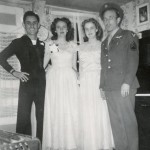 brother-in-law, Jack McDaniels, and of course, she missed her own husband, my dad, Allen Spencer. It was simply that Mom just couldn’t bear to lose another one of her loved ones. She had stayed and kept on living after my dad passed away, because she knew we needed her. But, mom didn’t want to go on without her sister Evelyn, with whom she had always been close. Mom knew that her children would be alright, because she and Dad had trained us in the way we should go. When Mom left, it was not because she was sick, but rather that she knew that it was time for her to go. It was time to join Dad, and she would see her sister again in Heaven…all of her siblings would join her someday. In reality, she was tired, just as Aunt Evelyn was tired…and, now they aren’t. They are revived, healthy, and strong.
brother-in-law, Jack McDaniels, and of course, she missed her own husband, my dad, Allen Spencer. It was simply that Mom just couldn’t bear to lose another one of her loved ones. She had stayed and kept on living after my dad passed away, because she knew we needed her. But, mom didn’t want to go on without her sister Evelyn, with whom she had always been close. Mom knew that her children would be alright, because she and Dad had trained us in the way we should go. When Mom left, it was not because she was sick, but rather that she knew that it was time for her to go. It was time to join Dad, and she would see her sister again in Heaven…all of her siblings would join her someday. In reality, she was tired, just as Aunt Evelyn was tired…and, now they aren’t. They are revived, healthy, and strong.
Aunt Evelyn was the oldest of the Byer siblings, and the leader, I suppose. As often happens with the eldest  sibling, they are the first to do many things, and then show the younger siblings the way. They are the standard the younger siblings want to live up to. The Byer siblings all married at relatively the same times and had children about the same times, but my parents and Aunt Evelyn and Uncle George, did things together a lot. They double dated, hung out together, and even bowled together. That made Mom and Aunt Evelyn very good sister friends. I think that the thought of her sister being in Heaven was something that made Mom yearn to go too. Now they are both there, and while I miss them both very much, I know that they are in my future now, and not my past. Today would have been Aunt Evelyn’s 88th birthday. Happy birthday in Heaven Aunt Evelyn. We love and miss you very much.
sibling, they are the first to do many things, and then show the younger siblings the way. They are the standard the younger siblings want to live up to. The Byer siblings all married at relatively the same times and had children about the same times, but my parents and Aunt Evelyn and Uncle George, did things together a lot. They double dated, hung out together, and even bowled together. That made Mom and Aunt Evelyn very good sister friends. I think that the thought of her sister being in Heaven was something that made Mom yearn to go too. Now they are both there, and while I miss them both very much, I know that they are in my future now, and not my past. Today would have been Aunt Evelyn’s 88th birthday. Happy birthday in Heaven Aunt Evelyn. We love and miss you very much.
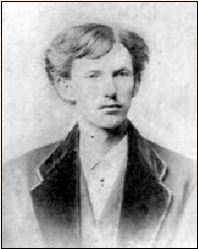 When we think of gunslingers from the old west, a number of names come to mind…among them, Doc Holliday. John Henry “Doc” Holliday was born August 14, 1851 in Griffin, Georgia, to Henry Burroughs Holliday and Alice Jane (McKey) Holliday. When John was just 15 years old, his mother died of Tuberculosis on September 16, 1866. His adopted brother also died of Tuberculosis. In 1870, at the age of 19, Holliday left home for Philadelphia, and on March 1, 1872, he received his Doctor of Dental Surgery degree from the Pennsylvania College of Dental Surgery. Holliday graduated five months before his 21st birthday, so the school held his degree until he turned 21, which was the minimum age required to practice dentistry.
When we think of gunslingers from the old west, a number of names come to mind…among them, Doc Holliday. John Henry “Doc” Holliday was born August 14, 1851 in Griffin, Georgia, to Henry Burroughs Holliday and Alice Jane (McKey) Holliday. When John was just 15 years old, his mother died of Tuberculosis on September 16, 1866. His adopted brother also died of Tuberculosis. In 1870, at the age of 19, Holliday left home for Philadelphia, and on March 1, 1872, he received his Doctor of Dental Surgery degree from the Pennsylvania College of Dental Surgery. Holliday graduated five months before his 21st birthday, so the school held his degree until he turned 21, which was the minimum age required to practice dentistry.
Many people remember Doc Holliday from the gunfight at the OK Corral in Tombstone, Arizona, but prior to that time, he was in Saint Louis, Missouri and Atlanta, Georgia. He started has practice in Saint Louis, but switched to Atlanta less than four months later 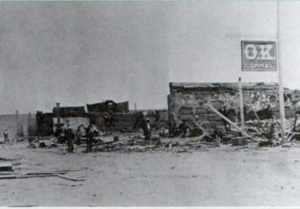 to join a dental practice there. While in Atlanta, Holliday and some friends got into an altercation, and in the end, Holliday went and got a shotgun. He came back and started shooting, either at or over the heads of the other men. Whether or not anyone was killed is up for debate, but Holliday gained a reputation as a gunslinger.
to join a dental practice there. While in Atlanta, Holliday and some friends got into an altercation, and in the end, Holliday went and got a shotgun. He came back and started shooting, either at or over the heads of the other men. Whether or not anyone was killed is up for debate, but Holliday gained a reputation as a gunslinger.
Soon after moving to Atlanta, Holliday developed a bad cough. The doctors told him that he had Tuberculosis. I can’t even begin to imagine how Holliday felt about that diagnosis. He had watched his mother die of that very disease, as well as his adopted brother. Holliday was told he needed to move to a dryer 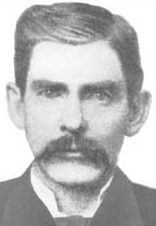 climate, if he wanted to extend his life. He moved to Dallas, Texas. His dental practice could have suffered because of his ill health, or it could have been caused by the fact that he would rather play poker than work on teeth. Holliday was a decent poker player, so he found that it was a pretty good way to make a living. In 1875, Holliday was arrested in Dallas for participating in a shootout.
climate, if he wanted to extend his life. He moved to Dallas, Texas. His dental practice could have suffered because of his ill health, or it could have been caused by the fact that he would rather play poker than work on teeth. Holliday was a decent poker player, so he found that it was a pretty good way to make a living. In 1875, Holliday was arrested in Dallas for participating in a shootout.
Holliday left Dallas and began drifting between booming Wild West towns like Denver, Cheyenne, Deadwood, and Dodge City. He made his living at card tables, with heavy drinking and late night. All of these things were quite aggravating to his Tuberculosis. By 1887, Holliday’s hard life had caught up with him, forcing him to seek treatment in a sanitarium in Glenwood Springs, Colorado. Finally, on this day, November 8, 1887, Doc Holliday, gunslinger, gambler, and occasional dentist, lost his battle with Tuberculosis, just like his mother and adoptive brother before him.

